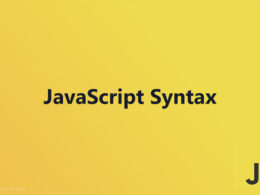Iterating with Ease: JavaScript forEach() Loop Explained

The JavaScript forEach() method is a versatile tool for iterating over arrays, allowing developers to execute a function on each element seamlessly.
This article explores the method’s syntax, practical applications, and nuances, alongside comparisons with other array iteration methods to provide a comprehensive understanding of how to effectively utilize forEach() in various coding scenarios.
Understanding the forEach() Method
Definition and Usage
The forEach() method in JavaScript is a powerful function that’s part of the Array.prototype; it is used to execute a provided function once for each array element.
Typically, it helps in simplifying code that involves loop constructs, making it cleaner and easier to read. As an integral part of JavaScript array methods, its main advantage is allowing you to execute a specific block of code for each element in an array without setting up traditional loop syntax like for or while.
Common use cases involve operations where you need to apply the same action across all elements of an array – for instance, transforming each item in an array, logging out contents of an array, or accumulating values using an additional variable.
The elegance of the javascript foreach loop lies in how it abstracts complexities and focuses on applying business logic at the element level.
Syntax
Basic Syntax Structure
The basic syntax of forEach() looks like this:
array.forEach(function(currentValue, index, arr), thisValue)
Here, array is the array you are operating on. The function inside forEach() is called for each element in the array. This approach not only improves code readability but also efficiency in handling data stored in arrays.
Parameters Explained
- currentValue: This is the value of the current array element being processed.
- index (Optional): This is the index of the current element being processed in the array.
- arr (Optional): The array
forEach()was called upon. - thisValue (Optional): Value to use as
thiswhile executing the callback.
By understanding these parameters, developers can manage array data more effectively, for instance, by using the index to access other elements in the array or modify the array structure directly during iteration.
Browser Support
| Browser | Version Support |
|---|---|
| Chrome | 51+ |
| Firefox | 47+ |
| Safari | 10+ |
| Edge | 14+ |
| Internet Explorer | Not supported |
| Opera | 38+ |
| Android Webview | 51+ |
| Chrome for Android | 51+ |
| Firefox for Android | 47+ |
| Opera for Android | 38+ |
| Safari on iOS | 10+ |
| Samsung Internet | 5.0+ |
Ensuring that web applications work across all browsers is crucial. The forEach() method is widely supported in modern web browsers, including Google Chrome, Firefox, Safari, and Edge. However, it is not supported in Internet Explorer.
For projects where browser compatibility is essential, especially with older browsers, it’s necessary to use polyfills or alternative array manipulation methods such as the traditional for loop.
By incorporating these cross-browser strategies, developers ensure that applications remain functional and accessible to all users, regardless of their browser choice.
This is particularly important when dealing with enterprise-level applications where extensive browser support is needed.
How the forEach() Method Works
Iteration Process
The essence of the forEach() method is its ability to iterate over array elements in a clean and straightforward manner.
Each element in the array is accessed sequentially, and the function provided to forEach() is executed once per element. This method not only simplifies iterating arrays but enhances readability and maintainability of the code.
When comparing forEach() to traditional looping mechanisms like for or while, a significant difference is seen in the abstraction forEach() offers.
There’s no need to manage loop counters or exit conditions, which are common sources of errors in traditional loops. Instead, forEach() handles these aspects internally, allowing you to focus purely on the operation you want to perform on each element, thus reducing the likelihood of bugs related to loop control.
Callback Function
Role of the Callback Function
In the context of forEach(), the callback function is where the actual computation or operation on each array element happens.
The function is called with each element in the array, providing a block where you can execute any code needed for each item.
This setup is ideal for scenarios where you need to apply a particular function to every element in the array without affecting the original array structure.
Parameters of the Callback Function
The callback function for forEach() can take up to three parameters:
- currentValue: the current element being processed in the array. This is the most frequently used parameter as it represents the item on which you might want to perform operations.
- index: the index of the current element in the array. This is useful if you need the position of an item within the array, possibly to compare it with other positions or to modify elements conditionally based on their positions.
- array: the array that
forEach()is being applied to. Although less commonly used, it provides access to the entire array, should there be a need to reference it directly.
Examples with Callback Functions
Here are a few practical examples depicting how to use callback functions with forEach():
const fruits = ['apple', 'banana', 'cherry'];
fruits.forEach((item, index) => {
console.log(`${index + 1}: ${item}`);
});
This example simply prints each fruit’s name along with its index in the array. It’s straightforward but illustrates the basic use of both item and index parameters.
const numbers = [5, 10, 15];
let sum = 0;
numbers.forEach(number => {
sum += number;
});
console.log(`Total Sum: ${sum}`);
In this case, forEach() is used to calculate the total of all numbers in an array. It demonstrates how forEach() can interact with external variables effectively, in this case, maintaining a running total.
Practical Examples of forEach()
Basic Examples
Printing Array Elements
Using the forEach() method to print elements of an array is a straightforward way to see it in action. Here’s a simple example:
const colors = ['red', 'green', 'blue'];
colors.forEach(color => {
console.log(color);
});
This snippet will log each color in the array to the console, showing a direct application of forEach() for iterative operations.
Using thisArg Parameter
The thisArg parameter in the forEach() method allows you to pass a context to the function being executed. It is beneficial when you want to access an object’s properties within a forEach() loop. Consider this example:
const buttonHandler = {
id: '12345',
onClick: function() {
['one', 'two', 'three'].forEach(function(item) {
console.log(this.id + ': ' + item);
}, this);
}
};
buttonHandler.onClick();
This code prints ‘12345: one’, ‘12345: two’, ‘12345: three’, utilizing thisArg to access the id property of buttonHandler within the forEach() loop.
Advanced Examples
Modifying Array During Iteration
Modifying an array during iteration can be risky but is permissible under certain conditions. Here’s an approach using forEach():
const numbers = [1, 2, 3];
numbers.forEach((num, index, arr) => {
arr[index] = num * 2;
});
console.log(numbers);
This code will update each element in the array, doubling its original value.
Using Arrow Functions with forEach()
Arrow functions provide a cleaner syntax and lexical this binding. Here’s how you might use them with forEach():
const tasks = ['Laundry', 'Dishes', 'Vacuum'];
tasks.forEach(task => console.log(task));
This example will log each task to the console by using an arrow function to streamline the function passed to forEach().
Processing Arrays with Missing Elements
forEach() skips empty slots in arrays, making it particularly handy for arrays with missing elements:
let sparseArray = [1, , 3];
sparseArray.forEach(value => console.log(value));
This will log “1” and “3”, skipping the undefined middle element.
Common Use Cases
Summing Values in an Array
A typical use case for forEach() is summing up all elements in an array:
const amounts = [29.76, 41.85, 46.5];
let total = 0;
amounts.forEach(amount => {
total += amount;
});
console.log(`Total amount: ${total}`);
This example demonstrates accumulating a sum, illustrating forEach()‘s utility in reducing a collection to a single value.
Using Conditionals in Callback Functions
Implementing logic conditionally within forEach() is a powerful way to handle diverse scenarios:
const scores = [82, 95, 58, 77, 65];
scores.forEach(score => {
if (score >= 75) {
console.log(`Passed with score: ${score}`);
} else {
console.log(`Failed with score: ${score}`);
}
});
This snippet categorizes scores as ‘passed’ or ‘failed’, showing how forEach can efficiently integrate simple decision-making within array processing.
Nuances and Considerations
Performance Considerations
When choosing the right tool for array manipulation, considering performance is key, especially for large datasets.
While the javascript foreach loop provides a simple and clear syntax, it may not always be the fastest option compared to traditional for loops or other higher-order functions like map() or reduce().
forEach() vs Other Iteration Methods:
- Traditional
forloops generally offer better performance when dealing with very large arrays or when loop performance is critical. - Methods like
map()andfilter()may be more suitable when you need to return a new array based on the original.
Potential Impact on Large Arrays:
- Iterating over large arrays with
forEach()can be less performant because each iteration calls a function which adds to the overhead, especially noticeable in high-performance or real-time applications.
Mutation of Original Array
One significant aspect of forEach() is its behavior with the original array during iteration.
Effects of forEach() on Original Array:
- Unlike some array methods that return a new array,
forEach()modifies the original array directly if any changes are made to its elements within the callback function. This can lead to side effects if not handled carefully.
Practical Implications:
- It’s essential to be aware that mutations within
forEach()are reflected in the original array, which might not be intended. If maintaining the original state of the array is necessary, other methods or techniques should be considered.
Limitation and Best Practices
forEach() is versatile but comes with limitations that might affect its utility in specific scenarios.
No Break or Continue Statements:
- You cannot use
breakorcontinueinside aforEach()loop. If you need to terminate the loop based on some condition, you might need to use other looping constructs likefor,for...of, or array methods likesome()orevery()that support conditional termination.
Recommended Use Cases:
- Use
forEach()when you need to execute a function on each item in an array and when array mutation is not a concern, or when you fully control the array elements’ manipulation. - It’s perfect for scenarios where simplicity and readability are more valued than performance optimization, particularly in non-performance-critical parts of the application.
Polyfills and Compatibility
Importance of Polyfills

In web development, maintaining functionality across different environments and browsers is crucial.
This is where polyfills play a vital role. They allow developers to use modern features of JavaScript that are not available in older browsers by simulating these missing features.
Definition and Need for Polyfills:
- A polyfill is a piece of code (usually JavaScript) that provides modern functionality on older browsers that do not natively support it.
- They are essential for ensuring that web applications provide a consistent experience regardless of the user’s browser version.
Example of Polyfill for forEach():
- The
forEach()method in JavaScript is well-supported across modern browsers but lacks compatibility with older versions like Internet Explorer. Here’s a basic example of a polyfill forforEach():
if (!Array.prototype.forEach) {
Array.prototype.forEach = function(callback, thisArg) {
if (this == null) {
throw new TypeError('Array.prototype.forEach called on null or undefined');
}
thisArg = thisArg || window;
for (var i = 0; i < this.length; i++) {
callback.call(thisArg, this[i], i, this);
}
};
}
This code checks if forEach() is not available on the Array prototype and defines it if necessary, ensuring older browsers can also execute forEach loops.
Ensuring Cross-Browser Compatibility
Making sure your website behaves consistently across all browsers is no small feat, but it’s critical for reaching a broader audience.
Compatibility Across Different Browsers:
- Due to the disparate ways in which browsers interpret JavaScript, CSS, and HTML, developers must ensure their code runs smoothly across the spectrum.
- Features like
forEach()might behave slightly differently or might not be present in older browsers, necessitating checks or alternative solutions.
Testing and Debugging Tips:
- Utilize tools like BrowserStack or Sauce Labs to simulate how your code runs on different browsers and devices.
- Regularly use the console and developer tools available in browsers to test and debug issues.
- Incorporate automated testing in your development process to catch compatibility issues early.
Ensuring your application is compatible across different browsing environments not only enhances user experience but also broadens your user base by making your application accessible to more people, regardless of their browser choice.
Comparing forEach() with Other Array Methods
forEach() vs map()
Key Differences
The javascript foreach loop and the map() method both iterate over array items, but they serve different purposes. forEach() is used for executing a function on each array item without returning a result. In contrast, map() creates a new array by applying a function to each item in the original array.
Use Cases for Each Method
- Use
forEach()when you need to execute side effects for each element. - Use
map()when you need to transform elements in an array and store the results.
forEach() vs for Loop
Syntax and Performance
The syntax for forEach() is more declarative, focusing on what you want to do with each element, which can make the code cleaner and easier to read.
Traditional for loops, while sometimes more cumbersome, can offer better performance, especially for operations that require breaking out of the loop early.
When to Use Each
- Use
forEach()when readability is a priority and you need to apply a function to every element in the array. - Use a
forloop when performance is critical or when you need more control over the iteration, such as the ability to break or continue.
Other Array Iteration Methods
Other methods like filter(), reduce(), some(), and every() offer more specialized functionality for dealing with arrays:
- filter(): Creates a new array with all elements that pass the test implemented by the provided function.
- reduce(): Applies a function against an accumulator and each element in the array (from left to right) to reduce it to a single value.
- some() and every(): Test the array elements with a predicate function.
some()returnstrueif at least one element passes the test, whileevery()returnstrueonly if all elements pass.
Each of these methods can be used effectively depending on the specific requirements of the task, helping to write concise and readable code.
FAQ On JavaScript foreach Loop
What exactly does the JavaScript forEach() method do?
The forEach() method in JavaScript iterates through each element of an array. It executes a specified function once for each array element, making it a handy tool for performing operations like executing code for every item in an array without manually managing the iteration logic.
How does forEach() differ from a traditional for loop?
While both can iterate through arrays, forEach() abstracts away the loop mechanics, directly offering the current item and its index to the provided function. It’s less flexible in controlling iteration (e.g., you can’t break midway) compared to the traditional for loop, where such control is possible.
Can you use forEach() on objects?
Directly, no. The forEach() method is intended for arrays. However, if you need to iterate through an object’s properties, you might first convert the properties into an array using methods like Object.keys() or Object.entries(), which can then be looped through with forEach().
What happens if the array changes during a forEach() iteration?
If elements are added to the array after the forEach() loop starts, they will not be visited. Modifications to the existing array elements during iteration will be reflected, though, and any element removed before it is reached will not be processed.
Is the forEach() loop asynchronous?
No, forEach() operates synchronously. This means it will block the rest of your code from executing until it completes the loop. If you need asynchronous behavior, you might explore other patterns or functions, like using map() combined with asynchronous operations.
How do you access the index of the current element in forEach()?
Within the callback function you pass to forEach(), the index is provided as the second argument. It’s straightforward:
yourArray.forEach((element, index) => {
console.log(`Element at ${index}: ${element}`);
});
This will print each element’s index and value.
Can you stop a forEach() loop once it has started?
No, forEach() is designed to run until it processes all array elements. If you need to conditionally break out of a loop, consider using a for loop, for...of loop, or methods like some() or every() which inherently support conditional stops.
Are there any performance concerns with using forEach()?
In most everyday scenarios, forEach() is performant enough. However, in performance-critical applications, especially with large datasets, traditional loops like for can perform faster because they avoid the additional function call overhead that comes with forEach().
How do you use the third argument of the forEach() callback function?
The third argument in the forEach() callback function is the array itself, which can be handy if you need a reference to the entire array without accessing an external variable. This can be especially useful for comparing elements against other elements of the same array during the iteration.
What are the best practices for using forEach() in JavaScript coding?
Use forEach() for readability and when mutations to the array during iteration do not cause side effects. It is best suited for scenarios where each element needs to be processed, and the operation doesn’t demand conditional exits or relies on the order execution might be affected by asynchronous code execution.
Conclusion
Exploring the JavaScript forEach loop illuminates its role as a cornerstone in efficient JavaScript coding, particularly when working with arrays.
Ideal for executing functions across array elements with clarity and precision, forEach enriches the JavaScript array manipulation toolkit. Whether refining data sets or enhancing client-side scripts, embracing forEach’s capabilities alongside other array methods like map(), filter(), and reduce() can significantly elevate coding practices.
Understanding its nuances, from performance impacts to iteration specifics, empowers developers to craft more robust, readable, and reliable applications. Embrace forEach, but wield it wisely in the vast landscape of JavaScript development.
If you liked this article about javascript foreach loop, you should check out this article about JavaScript Events.
There are also similar articles discussing external javascript, javascript loops, JavaScript For Loop, and JavaScript While Loop.
And let’s not forget about articles on JavaScript for-in Loop, JavaScript For Of, JavaScript do…while Loop, and JavaScript Versions.
- How Are Desktop App, Web App, and Mobile App Similar and Different? - June 14, 2024
- Mastering JavaScript Logical Operators for Effective Logic - June 14, 2024
- Innovative Apps Like Google Lens To Try - June 13, 2024








